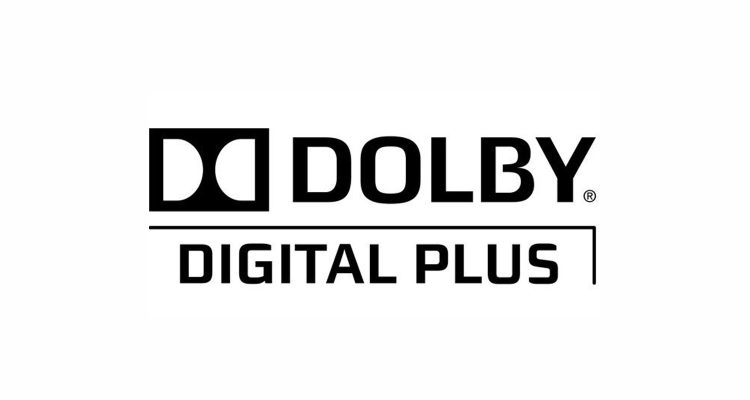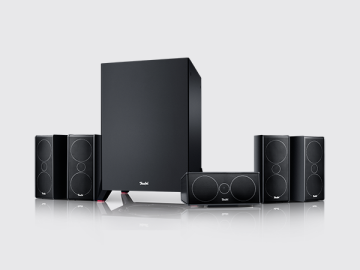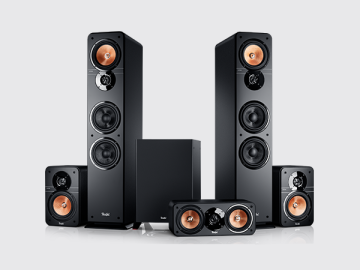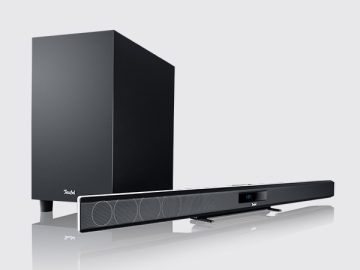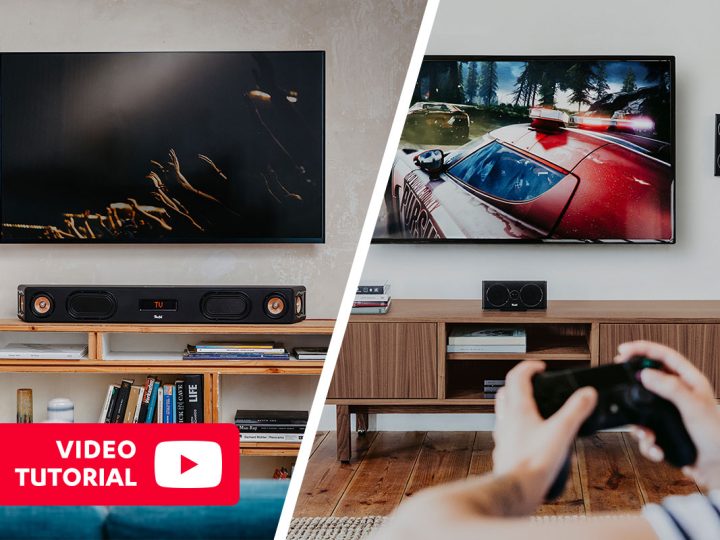Dolby Digital Plus (DD+) is an audio coding technology for surround sound based on Dolby Digital that is becoming increasingly popular. But the rise of Dolby Digital Plus was never a foregone conclusion. For a while, it looked as though the successor to Dolby’s original digital surround sound format would be Dolby TrueHD or DTS-HD.
Dolby TrueHD is a lossless audio codec capable of storing up to 8 channels for supplying even 7.1 systems with sound. However, as streaming began to edge out physical storage formats like Blu-ray discs, a need arose for better sounding compressed formats. Streaming brought greater convenience than DVDs and Blu-rays as a movie could be instantly selected and enjoyed, but the price for this convenience was bandwidth. It is therefore simply not possible to transmit an entire lossless multichannel soundtrack. The increasing use of HDMI cables also places constraints on the storage available for multi-channel soundtracks as much of the bandwidth is taken up with new technologies like 3D and audio return channel.
Digital surround compression that retained as much as the original PCM recording as possible (basically identical to the studio master) is the order of the day and this is what DD+ offers. It should therefore come as no surprise that this audio technology is gaining in popularity. Many important streaming providers including Netflix, Spotify and HBO stream surround sound in the compressed Dolby Digital Plus format and in May of this year, Microsoft announced that Windows 10 PCs will support Dolby Digital Plus. This includes Microsoft’s successor to Internet Explorer, Microsoft Edge. This innovative step allows individual websites accessed through the Microsoft Edge browser to be accompanied by surround sound. For the streaming/multi-device online media age, DD+ is quickly becoming the digital surround sound format of choice. After all, why should streamed and online content continue to trail behind older forms of media when it comes to sound quality?
Dolby Digital Plus: The perfect surround sound format for new media
Like its predecessor, Dolby Digital, Dolby Digital plus is based on the AC-3 lossy bit stream format. It’s biggest advantage over the older audio codec involves the compression technique. Just as the MP3 format rose to prominence with music downloads and later streaming, Dolby Digital Plus is a product of the internet age. Its key advantage is the ability to deliver better quality sound from smaller data files than Dolby Digital. This makes DD+ a very attractive format for online media that has only a limited amount of bandwidth at its disposal to stream. Add to this the fact that video is increasingly formatted in bandwidth-gobbling high definition picture quality and there is a clear need to offer a digital surround format that requires less bandwidth.
DD+ has a variable transmission rates ranging from 96 Kbps all the way up to to 6 Mbps. As a comparison, Dolby Digital has a limit of 640 Kbps. This large range makes DD+ very attractive for online content as the rate can be adjusted downwards as needed, albeit at the expense of sound quality. However, the loss of quality is not dramatic with DD+ as even lower transmission rates deliver very enjoyable surround sound due to a more efficient method of encoding. In addition, DD+ is backwards compatible. This makes it possible for older A/V receivers equipped with the older surround format, Dolby Digital, to play back Dolby Digital Plus at no cost to sound quality. On the contrary, DD+ soundtracks deliver a higher quality than DVDs. While these only play back 448 Kbps with Dolby Digital, they’re converted to Dolby Digital Plus signal via S/PDIF at 640 Kbps.
Dolby Digital Plus: How does it work?
DD+ is transmitted via an HDMI 1.3 connection. In order to use DD+, it’s therefore important to make sure that one’s A/V receiver is equipped with an HDMI connection. This is because the high bit rates used by DD+ can be too much for the bandwidths offered by digital or coaxial connections. It’s possible to get around this by having your A/V receiver down-convert to the older Dolby Digital bit rate of 640 Kbps or by using analog connections. However, this is usually not necessary as most contemporary A/V receivers are equipped with HDMI inputs for DVD players and other source devices. Of course, you’ll also need to make sure that the A/V receiver contains the necessary DD+ decoders, but this is also nearly always the case with new models.
When it comes to DVDs, DD+ probably won’t be what your A/V receiver is decoding as most movie and recording studios still prefer Dolby Digital. In fact, every DVD is guaranteed to have Dolby Digital as the base standard for DVDs is the inclusion of Dolby Digital or the PCM soundtrack. Blu-rays are often formatted in the previously mentioned lossless format, Dolby TrueHD or DTS-HD. The majority of streaming providers, however, will use DD+, but there is no hard and fast rule. The odd show or series may not be streamed or broadcast in this standard, but the selection of content that is available is growing.
Designed for next generation applications, expect to see more of DD+
For many years, surround sound was unheard of when it came to online content. Stereo was the best one could hope for. The increasing popularity of online libraries, streaming services and IPTV, however has created a demand for better options with online media. As a result, many providers are making efforts to give their users access to authentic surround sound. After all, not to do so could prevent people who own multi-channel systems from enjoying an online film library or streaming service.
In order to provide surround sound at sustainable bitrates, many streaming services have implemented Dolby Digital Plus. The following advantages illustrate why:
- Variable bitrates
- More efficient coding (better sound from less data)
- Backwards compatibility (works with even older receivers)
Although the sound is very good, it is not quite at the same level of a lossless standard such as Dolby TrueHD. The real breakthrough of DD+ is to offer a better sound than the compromised digital formats of the past along with even smaller file sizes. At the rate that apps, streaming providers and even websites have been adopting this standard, it’s wise to check for DD+ decoders and HDMI 1.3 when purchasing your next A/V receiver.
Cover image: © By Dolby Laboratories (Transferred from en.wikipedia) [Public domain], via Wikimedia Commons
